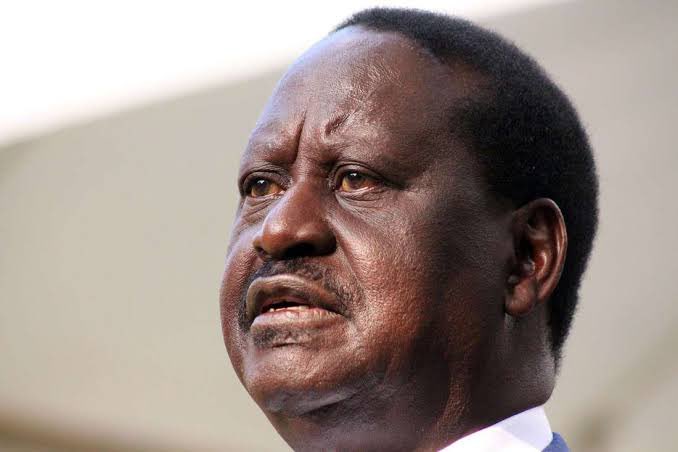By REUBEN MUSONIK, THE DISPATCH DIGITAL POLITICAL EDITOR
The Orange Democratic Movement (ODM), under the leadership of Raila Odinga, is at a crossroads, grappling with the political complexities of staying relevant in an increasingly fragmented opposition landscape and demanding but unpredictable youthful population. The party’s decision to engage with President William Ruto’s government while ostensibly remaining within the Azimio la Umoja coalition, against the wishes of a majority of the youth that gave it that opportunity to negotiate to enter government, has ignited a storm of controversy and speculation about its future. This delicate balancing act raises questions about the motivations behind these moves, the potential beneficiaries of ODM’s internal confusion, and the long-term implications for the party and its leadership.
ODM’s current predicament is characterized by its attempts to navigate between opposition duties and the allure of government power. Raila Odinga, known for his astute political maneuvering, appears to be playing a strategic game. By allowing key ODM figures to join Ruto’s Cabinet, Odinga may be hedging his bets, seeking to maintain influence in both the government and opposition circles. This move, however, has created confusion within the party and the broader Azimio coalition.
Azimio, initially formed as a strong opposition bloc to counter Ruto’s United Democratic Alliance (UDA), now faces an existential crisis. The inclusion of ODM leaders like Wycliffe Oparanya, Hassan Joho, and John Mbadi in the Cabinet has fueled distrust among other coalition partners. Parties like Wiper and KANU, which are still firmly in opposition, view ODM’s actions as a betrayal, threatening the unity and effectiveness of Azimio. Some members within the coalition are even calling for ODM’s expulsion, arguing that its dual allegiance undermines the coalition’s credibility and strength as a counterweight to the government..
The Beneficiaries of ODM’s Uncertainty
As ODM wades through these murky political waters, several stakeholders stand to benefit from the party’s internal turmoil. President William Ruto and his UDA party are the most obvious beneficiaries. By co-opting key ODM leaders, Ruto weakens the opposition, consolidates his power, and diminishes the threat of a unified front in the 2027 elections. This strategy also creates an image of inclusivity, as Ruto can claim to have a broad-based government that includes former opposition stalwarts.
Within ODM itself, the uncertainty presents an opportunity for the younger generation of leaders. Figures like Edwin Sifuna, Babu Owino, and Godfrey Osotsi are poised to rise through the ranks as the party grapples with its identity crisis. These leaders represent a new wave within ODM that could potentially rejuvenate the party or lead it in a different direction altogether. However, the success of this transition is not guaranteed, as the party’s future remains closely tied to Raila Odinga’s political decisions and ambitions .
Raila Odinga’s decision to dispatch top ODM leaders to Ruto’s Cabinet while retaining the party’s position in Azimio may reflect a deeper, more personal strategy. As Odinga contemplates his political legacy, there is speculation that he does not envision a clear successor within ODM. By sending key leaders into the government, Odinga could be ensuring that no single figure within ODM gains enough power to challenge his dominance. This move could also be a way to keep potential rivals close, limiting their ability to build independent power bases within the party. It may also explain the deliberate decision to keep Babu Owino away from the center of ODM politics by failing to give the young Embakasi East MP a national party job as many had expected since he is viewed as uncontrollable, vexatious and ambitious, the same way that Miguna Miguna was viewed – as a threat to Raila’s control over the Luo – and eventually contained through a combination of deceit and government force exerted through Raila’s cooperation with Uhuru Kenyatta’s regime.
Psychologically, Odinga’s decisions may be driven by a desire to remain the central figure in Kenyan opposition politics, even as he engages with the government. Politically, he may be leveraging his party’s involvement in the Cabinet to negotiate better terms for his own agenda, which could include securing a prominent role in the African Union or other international platforms. Economically, the move allows ODM leaders to access government resources, which could be crucial in maintaining the party’s operations and influence.
The future of ODM is uncertain, hinging on how the party navigates the current political landscape. If ODM continues its dual engagement with Azimio and the UDA government, it risks alienating its core supporters and diluting its identity as an opposition party. This could lead to a gradual decline in its influence and possibly a split within its ranks as different factions pursue divergent paths.
However, ODM could also emerge stronger if it successfully manages this transition, leveraging its government connections to push through reforms and maintain its relevance in Kenyan politics. The key to this outcome lies in whether the party can reconcile its internal divisions and present a unified front in the face of external pressures.
ODM’s current strategy is a high-stakes gamble that could either ensure its survival or hasten its demise. The party’s ability to navigate the delicate balance between opposition and government engagement will determine its future. As Raila Odinga continues to wield significant influence over the party’s direction, the coming months will be critical in shaping the political landscape ahead of the 2027 elections.
